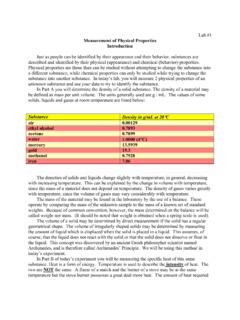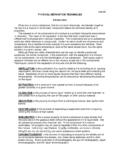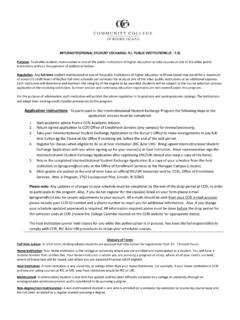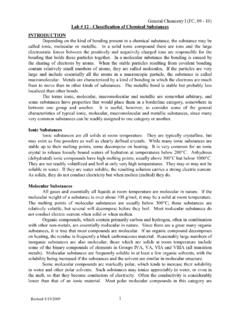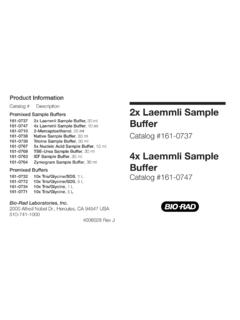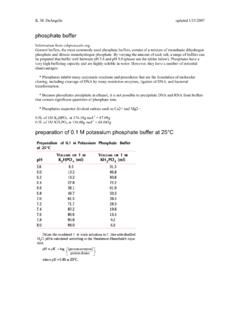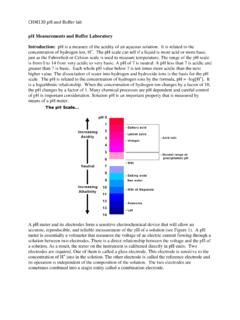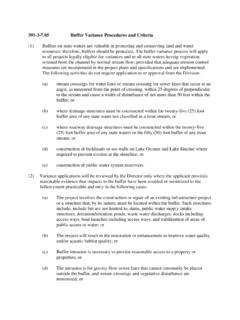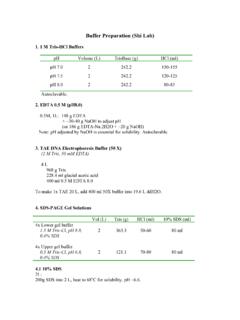Transcription of Buffer Calculations 1.0 What is the pH of 50.00 mL buffer ...
1 Buffer Calculations What is the pH of mL Buffer solution which is in HC2H3O2 and in NaC2H3O2 ? += + = += MMxacidbasepKapH What is the new pH after mL of HCl is added to this Buffer ? Initial moles of acid and base in Buffer is ( )( ) = Initial moles of H+ added is ( )( ) = HCl is a strong acid and dissociates 100%. The H+ ion reacts quantitatively with the conjugate base, C2H3O2- , form of the Buffer , changing the base to acid ratio of the Buffer and thus the pH. Base Acid H+ + C2H3O2 - HC2H3O2 Initial moles Change in moles + Final moles New molarity Remember that the final volume is mL not mL The new pH is thus: ) ( += + = MMxpH What is the new pH after mL of NaOH is added to the original Buffer ?
2 NaOH is a strong base and dissociates 100%. The OH- ion reacts quantitatively with the conjugate acid, HC2H3O2 form of the Buffer . Again the base to acid ratio of the Buffer is changed and thus the pH. moles of OH- is added. Acid Base OH- + HC2H3O2 C2H3O2- + H2O Initial moles Change in moles + Final moles New Molarity The new pH is thus: + = xpH

